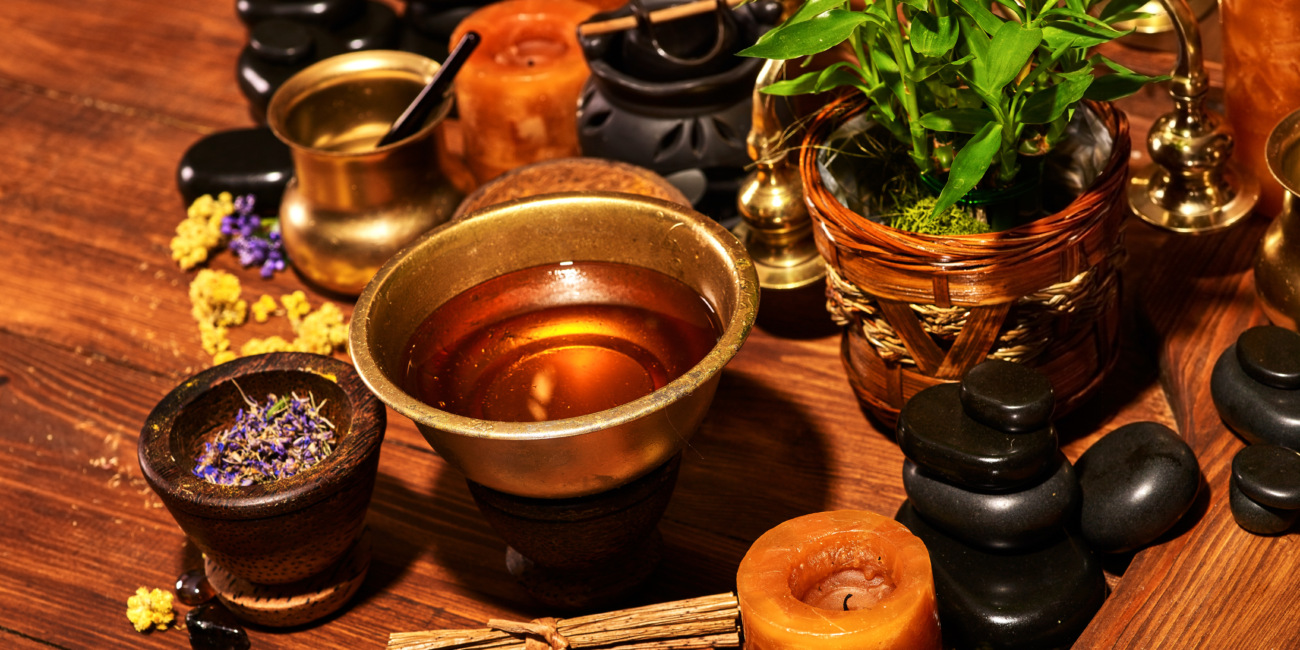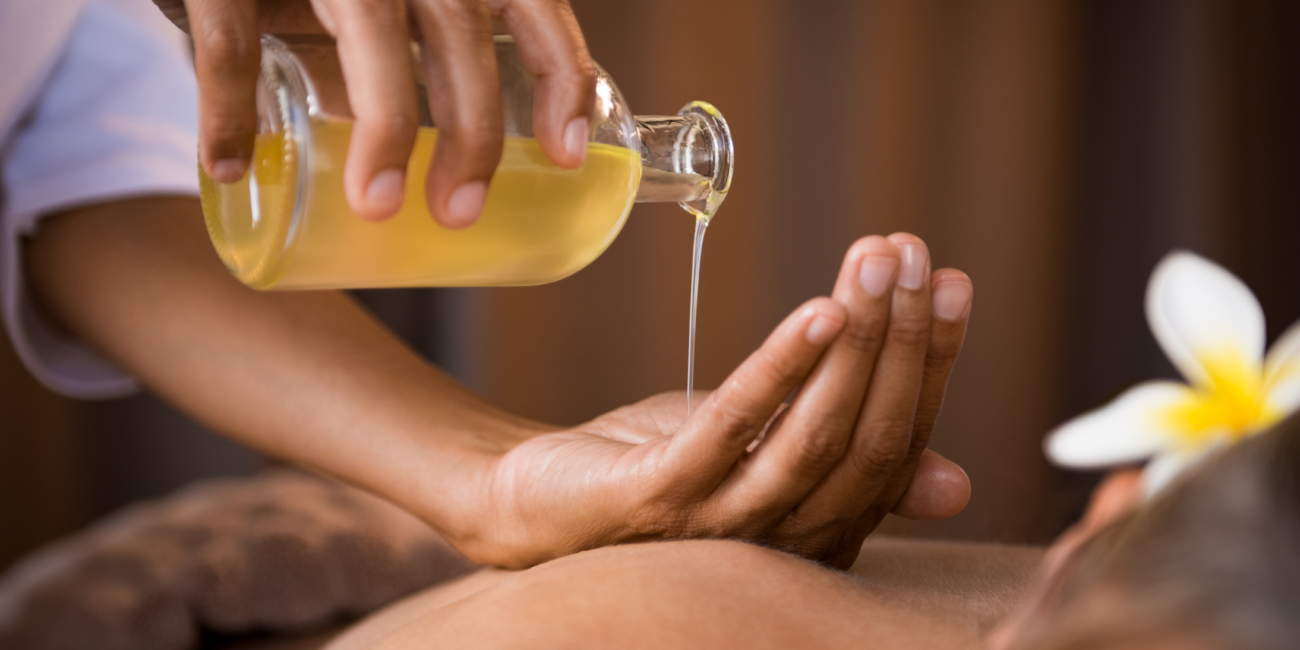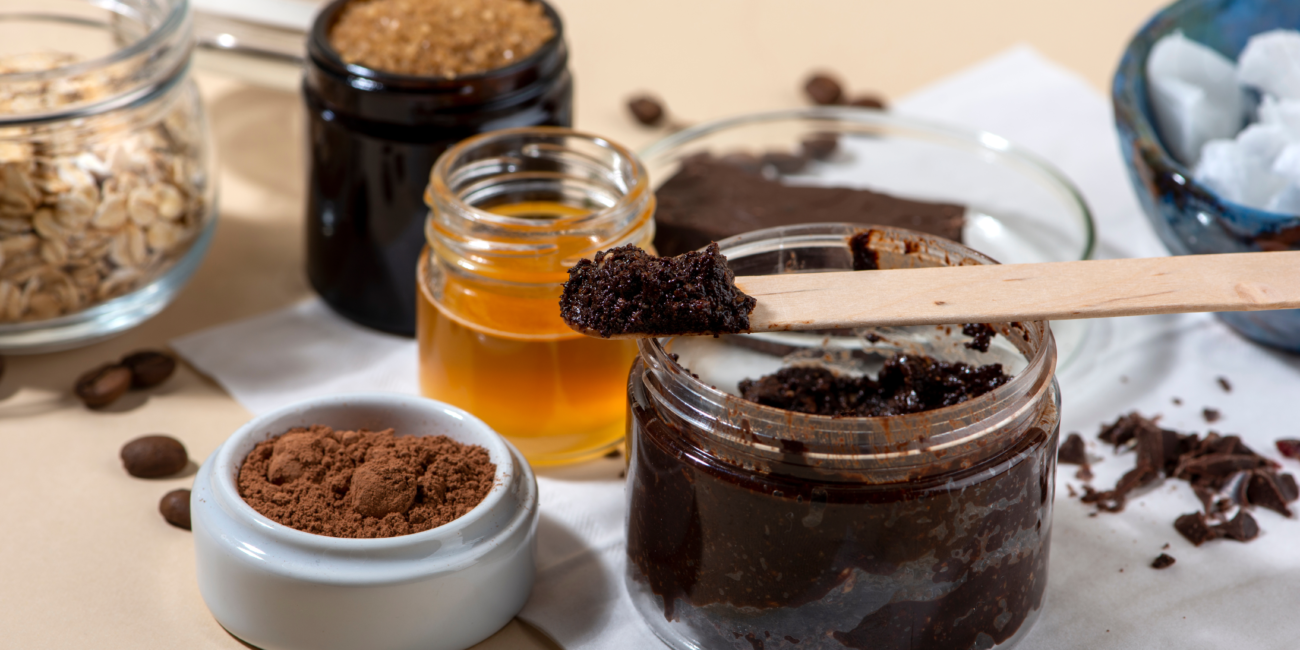Ayurvedic Routine recommends the following schedule for whole-body skin care in all seasons, from childhood to old age.

- Apply slightly warmed oil. as per your dosha dominance (Vata-sesame oil, Pitta-coconut oil, and Kapha-mustard oil)
- Give a full body massage (abhyanga) for about 10-15 minutes. It nourishes the body. promotes longevity, overcomes fatigue, makes the skin soft and silky, promotes the strength and sturdiness of the skin, increases the resistance power, and provides resistance to injuries and assault.
In short, massage keeps you invigorating, feeling youthful, beautiful, vital, and healthy. If you cannot receive or do a massage daily for the whole body, then at least massage your head and soles every day (which needs 3-4 minutes only). Once a week, a complete oil bath will also be helpful. For that:
- Vata people – Sesame oil, enhanced With Ashwagandha, Bala, Shatavari
- Pitta people – Coconut oil, enhanced with Bhringaraja, Brahmi, Chandana
- Kapha people – Mustard oil, enhanced with Nimba, Lodhra, jatiphala
Perform a few warming-up exercises like spot jogging, situps, Surya namaskars, and yogasanas for bout 10-15 minutes. As an option, you can take a sun bath, twice a week. Principally, after the ayurvedic massage, facial exercises, or sunbath works as a sudation (swedana), which reduces the heaviness of the body, colds, and pains; relieves the stiffness of the joints and muscles and eliminates the sweat-the subtle wastes. Particularly, it alleviates the Vata and Kapha doshas.
Then cleanse your body with an appropriate herbal powder mixture or an udvartana. An udvartana is a mixture of flour (gram or moong ) and often aromatic herbal powders like Ushira, Chandana, Koshtha, Jatamansi, Mushtaka, Padmakashtha, etc. This udvartana procedure removes the oils on the body, alleviates the Kapha dosha, and renders the skin clean and smooth. If you are obese, then do a massage with dry powders of Vacha (sweet flag). satala (acacia rugata), Mushtaka (nutgrass) and Triphala.
Take a warm water bath to rinse off the Udvartana. It gives a pleasant feeling to the mind, relieves stress and strain, removes sleepy feelings, elevates mood, and rejuvenates the mind to start the work with full enthusiasm.
Facial Care
The face is our introduction, identity, personality, and much more. It is the utmost part of the body, taken care of. There are innumerable synthetic preparations for facial care, in various forms, available in the market. Ayurveda recommends kumkumadi thailam which is effective as well as economical aid for facial care to cure pigmentation, acne, and dark spots.
Daily Care
Herbs for Beauty
To remain healthy and of good appearance the skin surface, especially of the face, requires frequent cleansing to remove grime, sebum, and other secretions, dead cells, crusts, and applied make-up. Water is a very cheap and effective cleansing agent for certain types of facial soil but is ineffective on its own against oils.
Daily morning facewash with cold water, recommended by Ayurveda as a part of the daily regimen, is many a times insufficient. As a daily routine, the initial cleansing and toning can be achieved with the paste of Triphala. The combination contains all three- astringent, light, and dry herbs. It works well on all the three doshas.
Take 2 pinchfuls of Triphala powder and prepare a paste with 3-4 teaspoons of cold water. Apply a thin layer of the paste on the face and neck. It dries off naturally within 5 minutes. Then wash it off with cold water and mop the face. After this, prepare the paste of licorice powder (1 pinchful in 2 teaspoons of water) and apply and wash it off similarly, after 5 minutes. The face becomes exquisitely clean, soft, and smooth. Liquorice works well as a moisturizing agent. This combination of triphala and licorice suits any type of skin.
If you have little time to spare, mix 2 pinchfuls of Triphala powder and 1 pinchful of Jiraka (cumin seeds) powder. Prepare the paste, apply it to the face, and wash it after 5 minutes. It renders equally good results.
Special Care
When you want to enjoy taking more care of yourself, it naturally requires more time. Special facial care can be achieved by taking steps in a sequence like initial cleansing, kumkumadi thailam facial massage, gentle scrub, face packs, and moisturizing. The full program once a week or at least twice a month is adequate.
A. Cleansing
Exposure to dust, fumes, smoke, dirt, and various other polluting agents affects the skin, by sticking the fine particles of these, on the face which is slightly moist and oily due to sweat and sebum. Hence, initial cleansing of the face is mandatory before receiving an ayurvedic massage.

B. Facial Oil-Massage
After initial cleansing, the facial skin is free from grime, sebum, and other secretions. It is ready to receive an Ayurvedic massage, with enhanced herbal oil preparations. Commonly, sesame oil (Tilataila) by itself or enhanced with herbs, suitable according to dosha, is used for ayurvedic massage to reduce dark spots, pigmentation, and acne scars. Facial massage is especially beneficial for debility, old age, leanness, exhaustion from excessive exercise, childhood, and vata diseases.
The benefits of Ayurvedic massage are that, it relieves muscular fatigue and pain, creates a lightness, soothes the facial skin, and improves facial circulation. Vigorous rubbing of the skin helps to prevent the build-up of excessive numbers of dead surface cells.
It is recommended to use kumkumadi thailam while massaging for dry skin. According to the ayurveda treatment, generic oil preparations like Narayana taila, Chandana Bala lakshadi taila, and Vishagarbha taila are recommended for the whole body massage for Vata, Pitta, and Kapha doshas, respectively. However, these preparations have more therapeutic value than cosmetic. Plain oils like coconut oil, mustard oil, and sesame oil for Pitta, Khapa, and Vata doshas, respectively, are adequate for facial massage.

C. Scrubs
The scrubs stimulate circulation, prevent blackheads, cleanse the skin pores, and effectively cleanse the deeper layers of the skin. It stimulates the new skin growth and improves the complexion. Commonly, the base of all scrubs are flours of Chanakya (gram), mudra, or measure. Various combinations of herbal powders are added to them, as per dosha or type of skin. The mixture is mixed with water and like udvartana, it is applied to the face.
D. Face Packs
These preparations are applied to the face in the form of pastes. In the old days, the face masks of Earth-based systems (Argillaceous masks), and the so-called mud packs were in vogue. Till today, special clay facial packs are available in the market, commonly known as Multani mitti.





